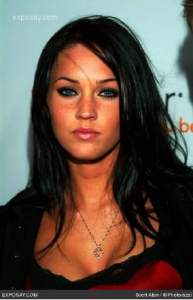Judging Beauty by Math
Guest post by Ville Satopaa ’11 from my Discrete Mathematics 251 class.
We all know of the famous Fibonacci sequence
0, 1, 1, 2, 3, 5, 8, 13, …
in which each term is the sum of the previous two.
When tends to infinity, the ratio between the
term and the
term gets closer and closer to something that we call the Golden Ratio, denoted by
:
This ratio seems to define beauty to some extent. In fact, it turns out that a person with a beautiful face has nose, eye position, the length of chin and many other measurements of the face in the Golden Ratio. Here are some measurements that should follow the Golden Ratio:
1. length of the face / width of the face
2. width of the mouth / width of the nose
3. width of the eyebrows / the distance between the pupils.
4. outside distance between eyes / hairline to pupil
5. nose tip to chin / mouth to the chin
Well, are faces with ratios close to the Golden Ratio actually beautiful? Fortunately, it is easy to test this. Let’s pick a photo of an attractive person looking directly at the camera, so that it is easy to make the measurements.

Using this picture of Meghan Fox from exposay.com I measured the following ratios (the picture pasted to this file is of difference size):
1. 7.1 / 4.3 = 1.65116
2. 1.6 / 1.0 = 1.6
3. 3.3 / 1.9 = 1.73684
4. 2.9 / 2.1 = 1.38095
5. 2.0 / 1.3 = 1.53846
The mean ratio turns out to be , and the mean difference from the Golden Ratio turns out to be
. Therefore her face is overall quite close to the Golden Ratio. However, whether this provides evidence that the Golden Ratio can be used as an estimate of beauty depends on whether you consider Meghan Fox attractive or not. I personally do.
 Welcome to my blog. I also have a blog at the
Welcome to my blog. I also have a blog at the